Last batch at 1950s Boston donut shop; last call at Wyoming's smallest bar; last gasps for 2 beach motels; hat's all for Arby's sign; cry for help from beloved chili shop
Plus, one good thing these places each have in common -- my upcoming book!
The Boston area has a defensible position as the American sweet spot in the story of the donut. Dunkin Donuts and Mister Donuts are the two most famous examples of familiar brands that would launch hereabouts and spread far from the Commonwealth. Still, there are other spots, the smaller ones, the local joints that have long injected the region with a carb-friendly strain of its culinary character.
Twin Donuts in Allston was one of those places, “no small feat when you’re competing for the hearts and stomachs of carb lovers in Dunkin’s ancestral homeland.” That’s what I wrote on the Retrologist Instagram back in 2019 after my first and only visit to Twin Donuts.
I also wrote this: “But don’t worry about Twin — the Allston, Massachusetts shop, opened in 1955, often finds itself at the top of Boston-area donut lists, and it has a passionate following. They come for the donuts and coffee, of course. But surely, they are drawn to the place by its midcentury vibe, its unmistakable authenticity and its prominent perch at the corner of Cambridge and North Beacon streets. To visit this tiny factory of confectionary happiness is to partake in something bigger than yourself. And that’s a pretty sweet feeling to get from a donut shop.”
Well, we’re long past the stage of worry and have now transitioned to grief. Twin Donuts closed on Sunday, March 23, afflicted with slowing business and kneecapped by rising costs, a tale whose familiarity fails to soften the blow of the loss. The owner, Woo Taing, told WBZ that business had never been the same since the pandemic.
Twin Donuts was founded by George Geskos, who reportedly named it after his twin boys, who were born in 1953. It was later run by one of those sons, Nick Geskos, who sold it to the Taings in 2001. The Taings will keep running two other greasy spoons in the area, the Cafe Mirror and The Brighton Cafe.
Twin was more than a donut shop. It also offered breakfast staples that were as popular as the honey glaze.
Boston Magazine’s Rachel Leah Blumenthal captures what we lose when a place like Twin Donuts closes for good.
The details of the old-timey doughnut shop experience may vary, from cash-only mom-and-pops with zero internet presence to modernized homages to the past, from warm service to lovably gruff. But the way these shops make us feel is universal and special, adding a bit of sweetness to our day-to-day schedules and rooting us to our communities. When they close, we lose a bit of our connection to a simpler time and, most importantly, to each other.
Indeed.
Whither the neon sign? All eyes are on that prize. If only it could be left in place, as this corner, like a ship’s prow with no mast towering above, would feel awfully empty without the sign’s big and benign presence.
Say it ain’t so, Joe. Lights out at Wyoming’s smallest bar

Gobsmacked is a good word to describe how I felt when I first laid eyes on the sign for Joe’s Liquor and Bar in Rock Springs, Wyoming, when I drove by in 2014 during a cherished Lincoln Highway adventure.
Not long ago, the iconic bar, known as Wyoming's smallest, seating just 14 in its Lilliputian 600-square-foot space, had its magnificent sign restored by the iconic sign shop YESCO of Salt Lake City, Utah. If the future looked bright for Joe’s back then, the sunny outlook would not last. After 64 years, Joe’s closed earlier this month. The liquor license has already been sold, and the building will have a new owner.
Longtime owner Angela Gaensslen told Cowboy State Daily that the sign is coming down, and she would prefer it end up somewhere like a museum, preferably in the West, and if she had her druthers, somewhere in Wyoming.
Signs like this can’t go up anymore in Rock Springs because the local code no longer permits them. Joe’s shined on as long as it did because it was grandfathered in. Had it ever been taken down for maintenance, it could never have been put back up, she said, so all work on the sign had to be done in situ. (See the sign in glorious action via glow-neon-lights on Instagram.)
According to the Cowboy State Daily, Gaensslen had owned the bar since 2005, and the previous owner had it for 32 years before her. When you hold something precious, the heart knows to hold on to it as long as possible.
Why sell? Gaensllen told Sweetwater Now she was ready for something else, ideally in a place where a snow shovel was not required.
A preservationist spell didn’t last as Magic Beach Motel once again faces demolition
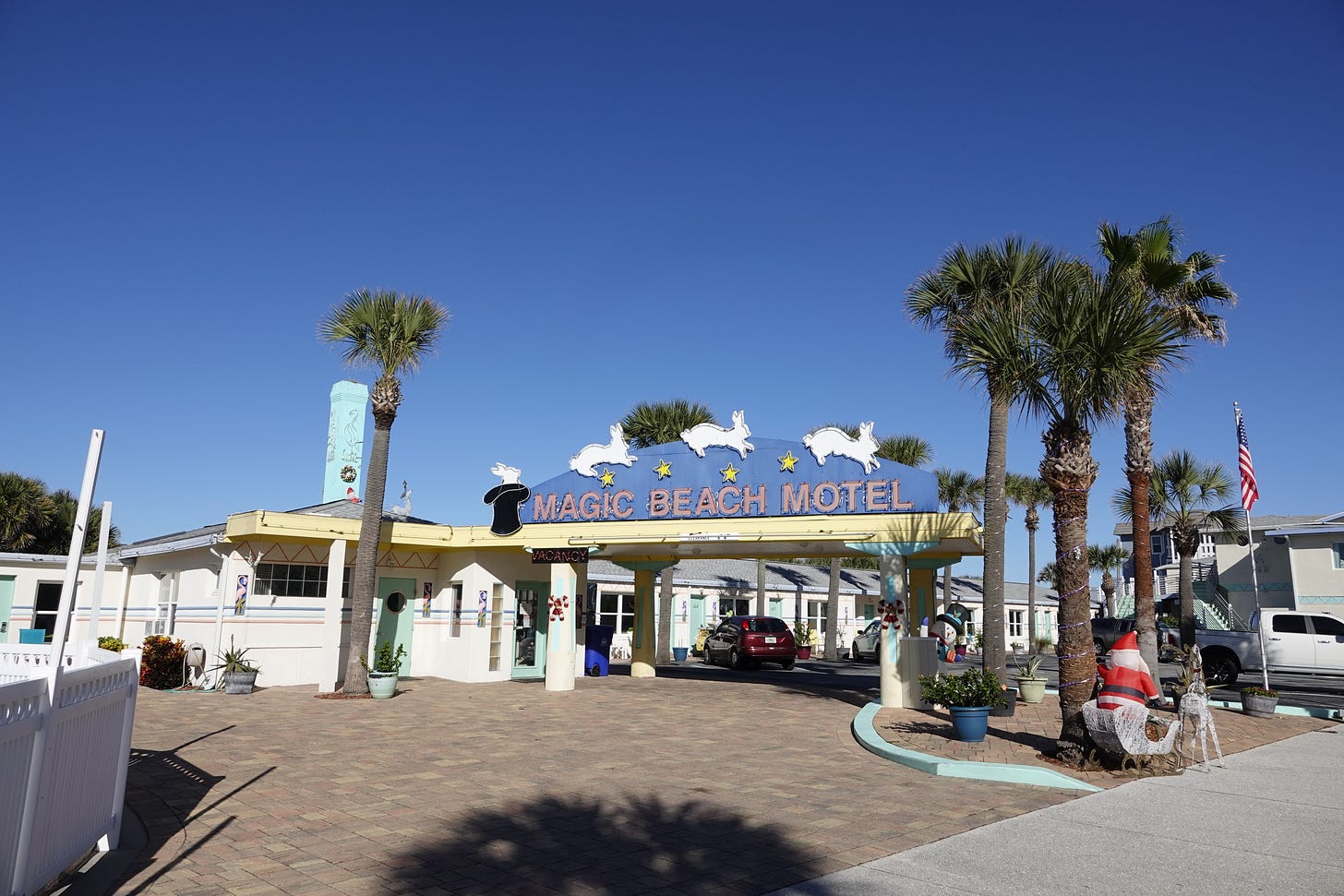
One of the most magical places on the American roadside is the Magic Beach Motel in Vilano Beach, Florida, right off A1A near St. Augustine.
It’s a well-maintained art deco motel, built in 1951, with flavors of the region captured in murals in the rooms, including a depiction of Juan Ponce de León’s Fountain of Youth. You can visit the real thing nearby.
The motel is particularly fascinating to me because of its name and signage, both remnants of a long-ago brush with Hollywood. In the fall of 1999, the motel was the setting of the short-lived WB network drama “Safe Harbor,” starring Gregory Harrison (as the widowed sheriff of the fictional town of Magic Beach) and Rue McClanahan (playing his mom, grandma to his kids and motel keeper).
While “Safe Harbor” did not make it to January 2000, its art design has lasted three decades into the new millennium. The show provided the whimsical neon sign featuring a rabbit jumping out of a magic hat astride stars and christened the property, the Magic Beach Motel, to match the fictional town. Once the film crews mosied back West after the show’s cancellation, the motel owners knew well enough to keep the name and signage.
Two decades later, the motel was spared a date with the bulldozer after owners Earl and Remy Jensen, who had lovingly renovated it, tried to sell it to a developer who planned a large hotel on the site. After an outcry, the St. Johns County Commission rejected the plan’s design, and the deal collapsed. While not on national landmark lists, the motel is considered a local “significant cultural resource,” which will add a layer of scrutiny to any proposal to destroy or modify it.
The Jensens, with some cheer, reopened the motel until selling it to the current owners, Shivram Properties, who declared they’d make it a boutique hotel and keep things as is. Three years have passed, and the owners are now working with the developer to demolish the property and build condominiums and retail buildings.
According to First Coast News, Tejal Patel, one of the owners, and the contractor, Fabio Fasanelli, have applied to demolish the property.
The motel’s owner and developer, Colonia Development, has presented plans to the town to turn the site into condominiums and retail, and the plans have won the support of the Vilano Beach Main Street Board, reports the Jacksonville Business Journal.
According to the publication, the plan is to build two buildings with 20 units, 5,000 square feet of retail space, and parking. The developer is expected to present the plans before the St. Johns County Cultural Resource Review Board on April 14. Surely, arguments for sparing the building again are likely to be made at the meeting, too.
Will the second time be the charm? Or is the Magic Beach Motel out of luck?
The stakes are high, as the motel is under contract for $4.75 million, and the developer told the Main Street board that the building itself was ill-suited to meet their plans. However, Rick Johnston, a representative for the developer, said the new development would incorporate nods — or “some suggestions” as the journal writes — to the Magic Beach Motel, according to the business journal.
Sallie O’Hara, who was involved in efforts to protect the motel during its 2021 dance with demolition, finds herself déjà vuing all over again with the latest proposal. Still, she expressed hope — should a new development happen this time — that elements of the original structure can be preserved, she told First Coast News.
She added:
"I think a compromise needs to be presented," O'Hara said. "It's doable. We don't want increased density traffic and so forth for the area, especially in that area. But we want to retain the ambiance and flavor of the community."
O’Hara notes she would like to see most, if not all of the building saved. However, she acknowledges a building from the 1950s needs a significant amount of maintenance.
Stay tuned.
Chateau Bleu, North Wildwood’s Doo Wop treasure, faces the wrecking ball
As if the news couldn’t get any worse for classic motels, the beloved Chateau Bleu Motel in North Wildwood, New Jersey, is even closer to demolition than the Magic Beach, with plans to knock it down approved that would replace the motel with three lots of single-family houses.
The motel was constructed in the Wildwoods’ signature “Doo Wop” style —out in California, they’d call it Googie. The motel is one of the most dramatic structures still standing here, with its bold porte cochere, fanciful blue typeface, and heart-shaped pool.
The motel has been on the National Register of Historic Places since 2004, but that does not appear to be an inoculation against scrapping it for a new development.
The register application lists its construction date as 1962, but NJ.com reports it was built in 1959 by the influential local Morey family. Newspaper ads for the motel first appeared in 1960, so we can safely assume it’s a little older than the commonly bandied-about date.
The motel is “one of the finest examples of mid-century resort architecture on the island and really the entire Northeast," John Donio, president of the Doo Wop Preservation League, told KYW Channel 3 Philadelphia.
The league has crafted designs with adaptive reuse in mind to preserve key features of the motel, including that stunning carport, in any new development. But it remains to be seen whether preservation will figure in the new complex’s design.
Hats all folks: Another Arby’s classic felled
Every time we lose an Arby’s 10-gallon-hat sign, an angel loses their wings.
As precious, special, and beloved as these signs are, they keep falling, and the latest to go down long defied gravity in Laurel, Maryland, and was for some as much an icon of this town as the Giant Supermarket sign up the road.
The town’s Arby’s is closed, and photos online show the hat sign being taken apart. A note sends meat lovers to the location in Jessup, Maryland. That store has vintage bona fides of more recent times, including the atrium dining room and a smaller, plastic version of the big neon and incandescent one that was the chain’s standard-bearer from 1964 to about 1975—and forever in our hearts.
Chili John’s is missing something — you! Burbank icon sounds the alarm for customers
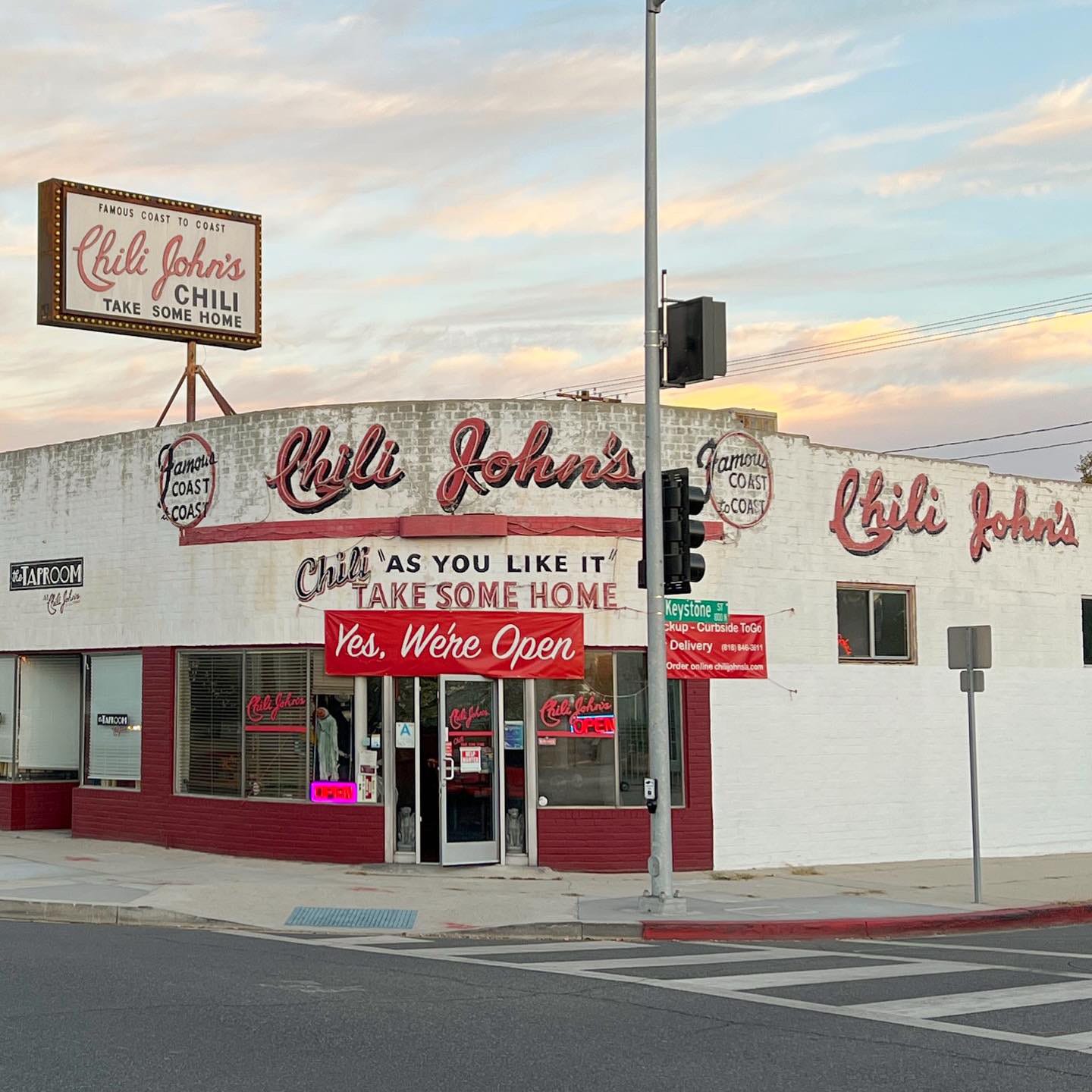
It’s hard to think of Burbank, California, without Chili John's. A staple since 1946, Chili John’s is a classic inside and out. Now, though, there is word that Chili John’s is in serious trouble. Business plummeted amid the pandemic, with the owner, Steve Hager, saying only 10 percent of the pre-pandemic customer base has returned. That is a devastating decline.
Hager told Fox 11:
"It’s just been super slow. We’re not even making enough to pay our staff, our taxes, or our mortgage. We’re going to be gone quick."
I don’t anticipate being in Burbank any time soon for a meal at that cozy U-shaped counter, but if you are anywhere nearby or will be planning a visit soon, make a point of visiting Chili John’s. The food is great, and the place's character is irreplicable. If you can’t make it out, the owner is accepting donations.
Here’s one thing each of these places has in common — my book!
The Magic Beach Motel, the Doo Wop motels of the Wildwoods, Twin Donuts, Arby’s hat signs, Joe’s Bar and Grill, and Chili John’s are all in my book, which you can preorder right now!
Preorders are crucial to a book’s success, so your support now would be greatly appreciated. The book officially goes on sale June 24.
Later this week, I’ll have much more about my book, with the story of how it all came about and what’s in it, so look out for that!
You can order “The Great American Retro Road Trip” anywhere you get books. Ask for it at your favorite bookstore, or order it online!
Coming Wednesday!
I’ll have a big roundup of roadside headlines, commentary on some interesting things I’ve spotted in my travels, and a ”peach” of a story about a Central California ranch whose defiant laborers inspired John Steinbeck and whose ghosts lingered — or I should say, towered — until not long ago.





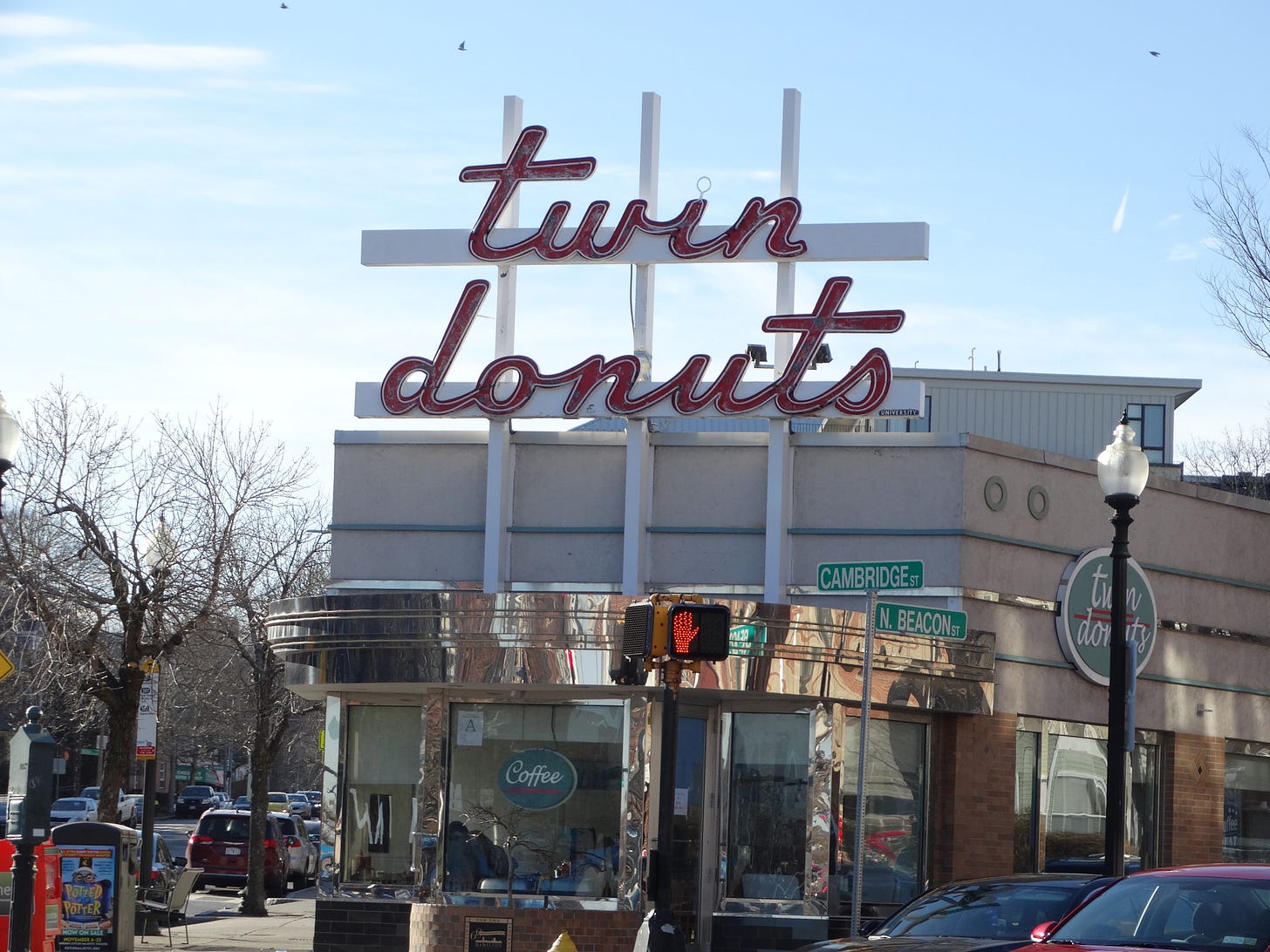
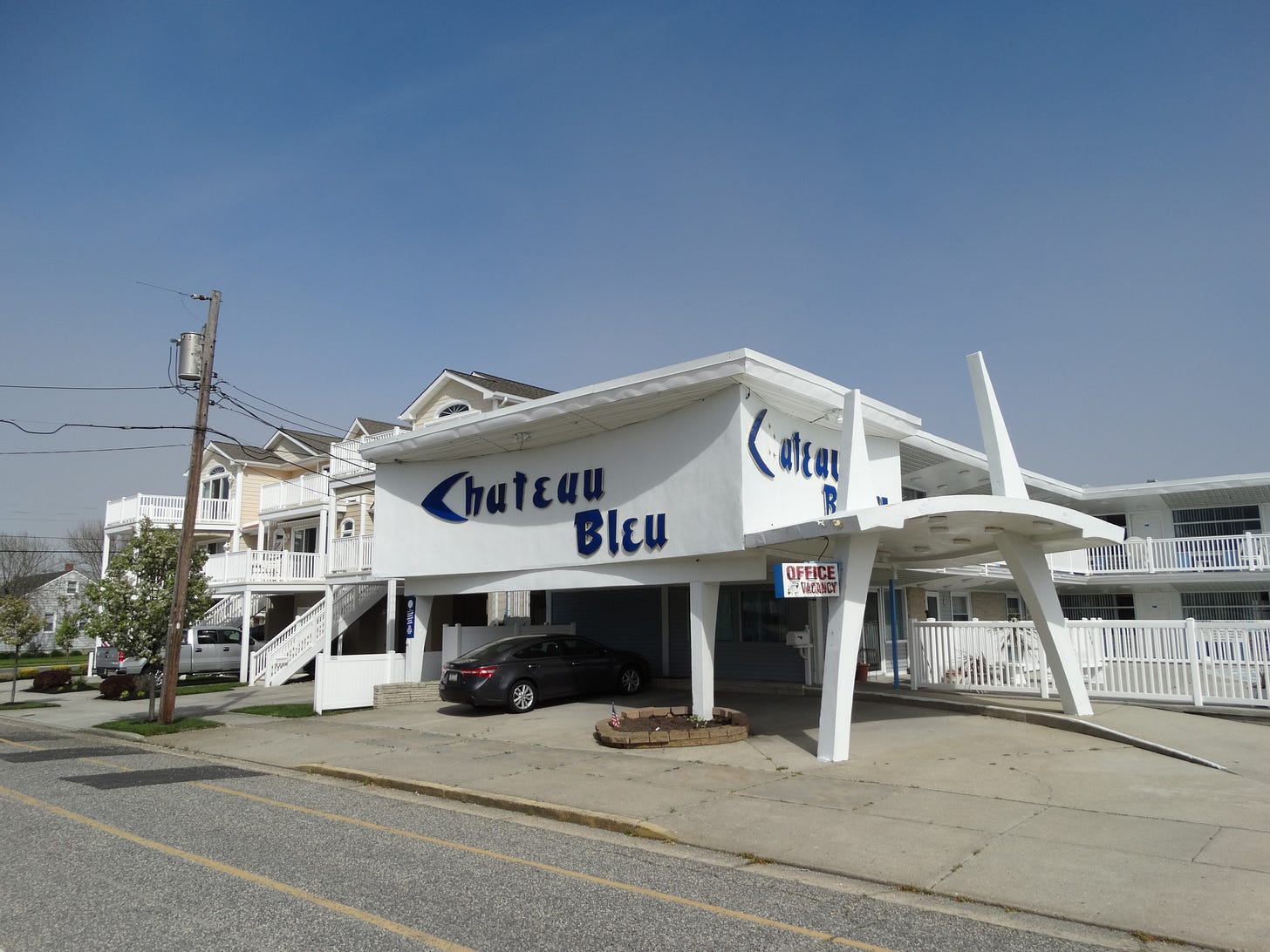
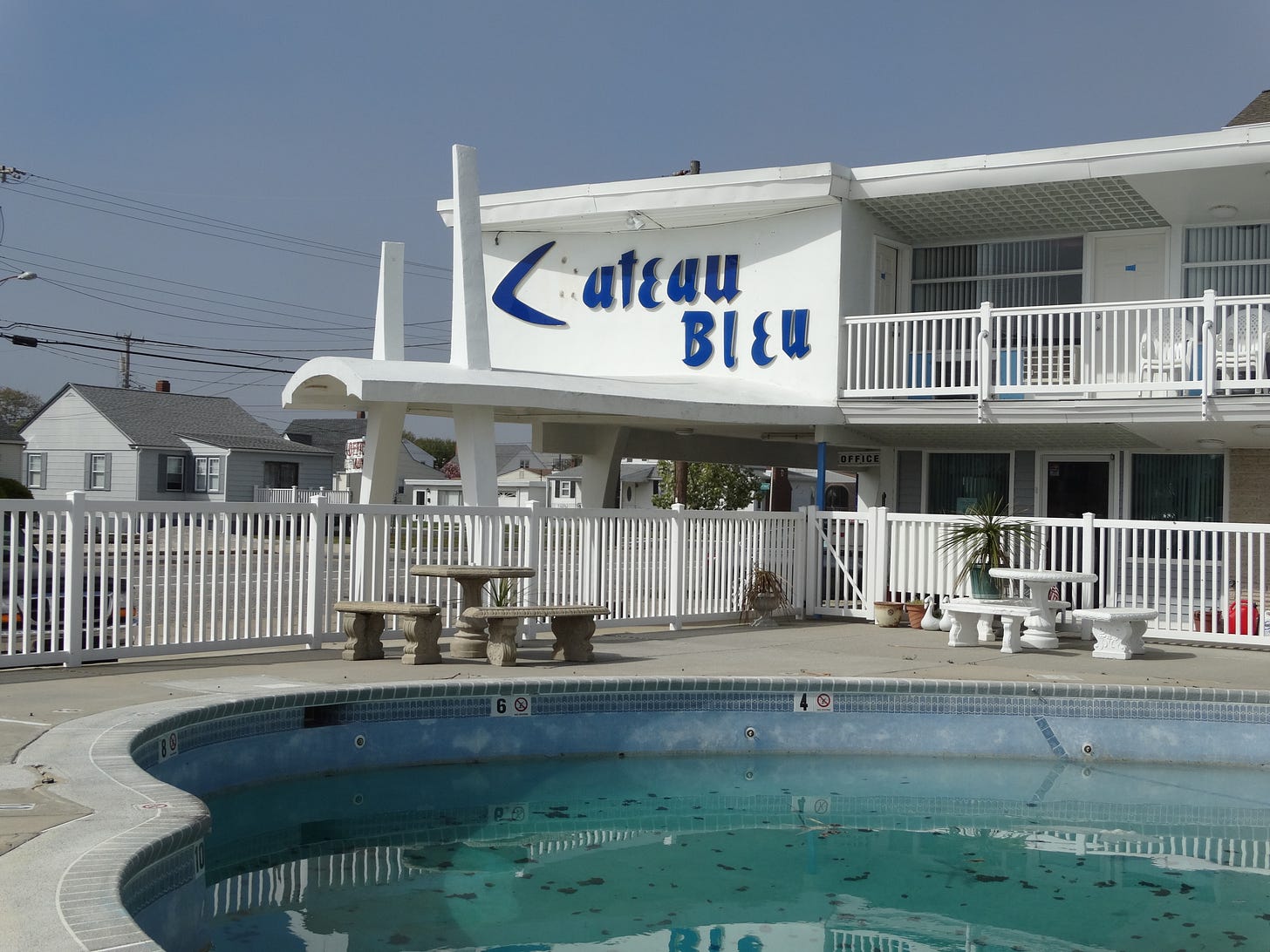
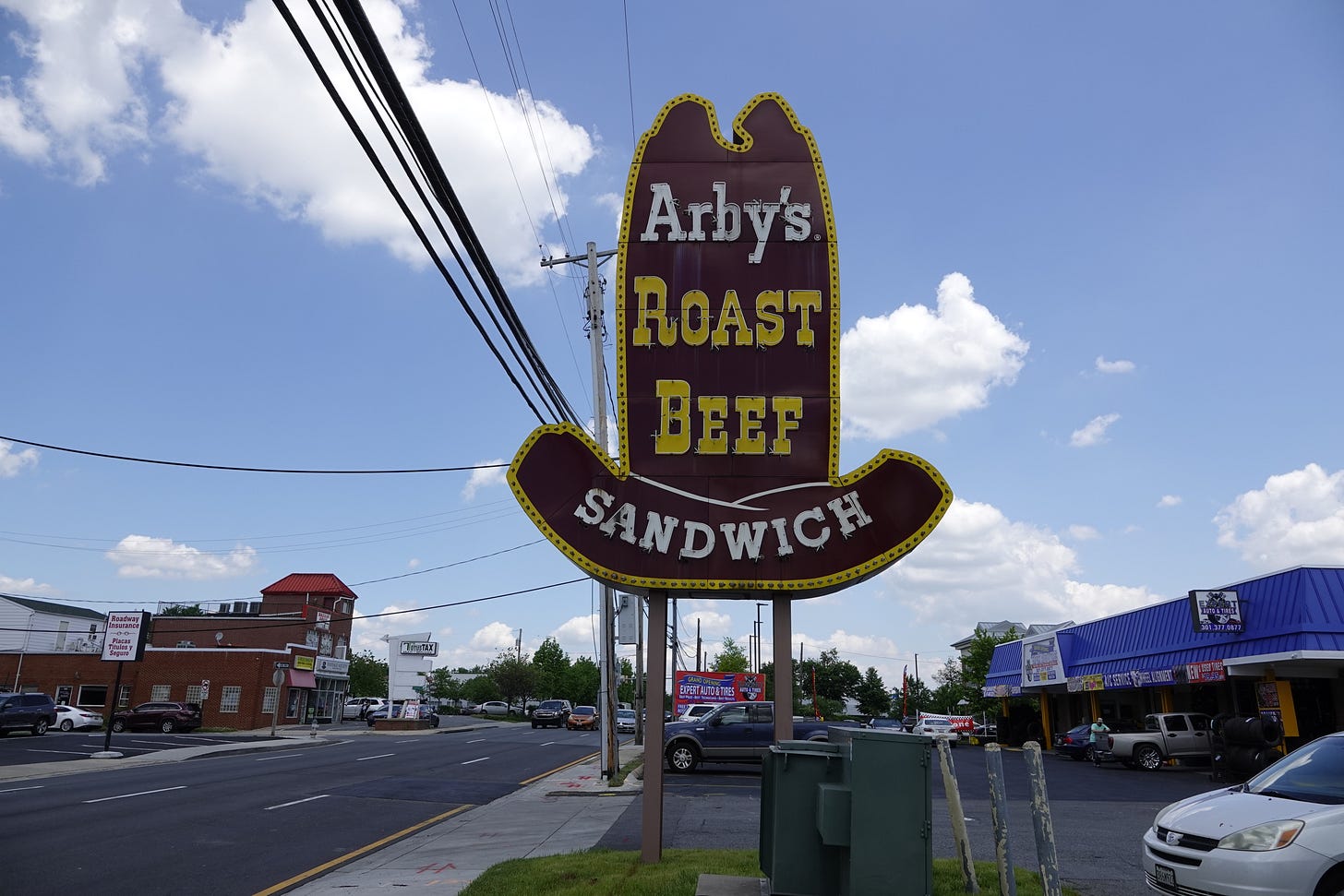

I just drove through Gainesville FL and saw a big Arby’s hat sign!
Yeah the morale is not good at Chili John’s. Gonna miss it.